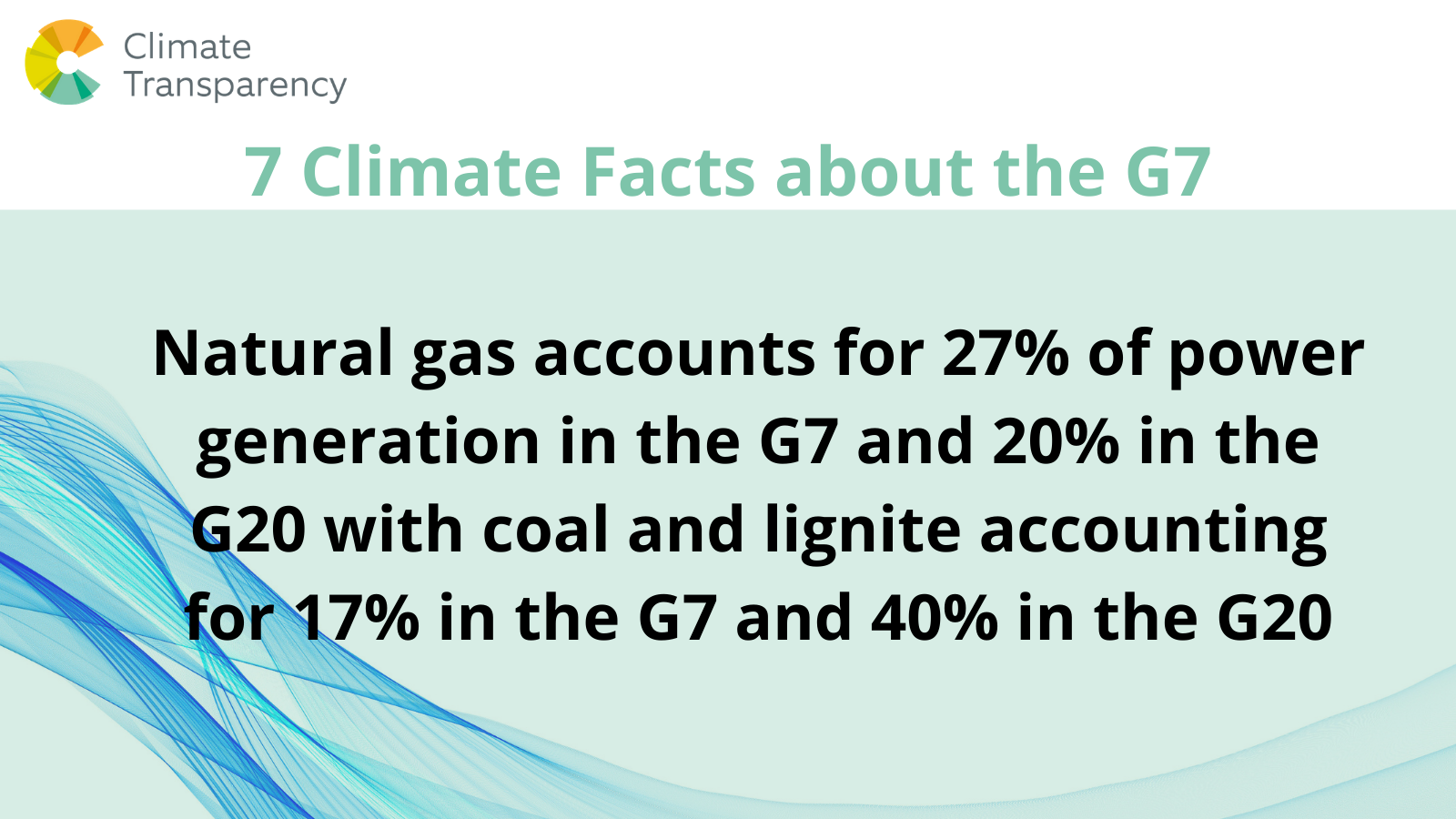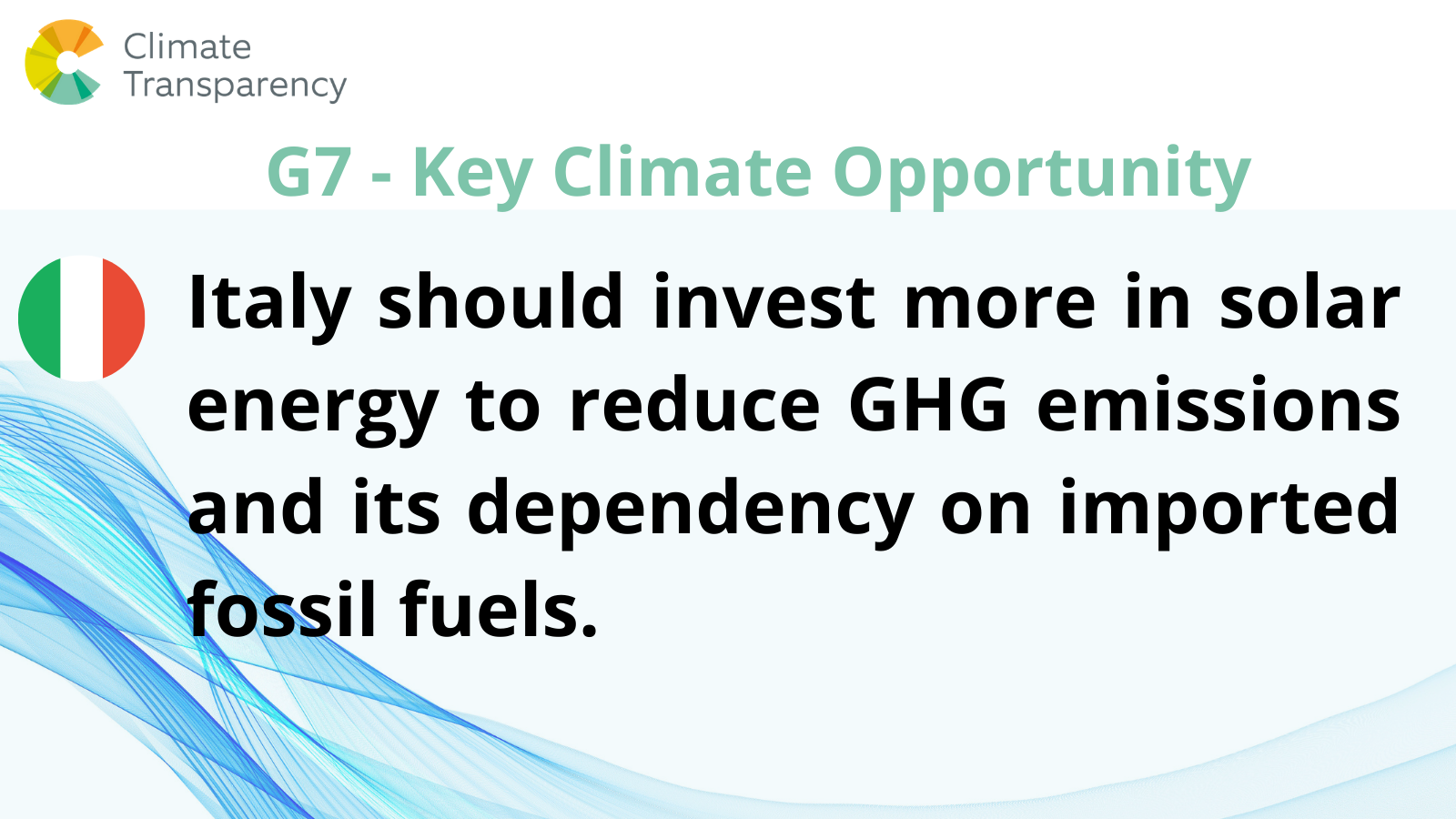A month after Biden’s Leaders’ Summit on Climate the G7 Summit in Cornwall provides an opportunity for the world’s richest nations to get serious about climate action.
The G7 have a responsibility to support poorer countries in their climate action, at the same time bringing down their own emissions.
The average GHG emissions per capita of the G7 group are more than 50% higher than those of the G20 (G7: 11.16 tCO2e/capita I G20: 7.32 tCO2e/capita). And this in spite of the fact that the G7 rely stronger on natural gas, which accounts for 27% of power generation in the G7 and 20% in the G20. Coal and lignite account for 17% in the G7 and 40% in the G20 with Japan and USA being the G7 countries with the worst coal phase-out policies. The G7 also needs to put a halt at subsidizing fossil fuels.
On a positive note, in all G7 countries the share of renewables in power generation grew in recent years. Moreover, in six of the G7 countries (except for Japan) the Corona stimulus packages provided an environmental-positive contribution according to the Green Stimulus Index of Vivid Economics.
Positive signals emerged from the recent meeting of the G7 climate and environment ministers. They agreed to stop all new financing for overseas coal projects by the end of 2021, committed to move away from unabated coal power and move to an overwhelmingly decarbonised power system in the 2030s.
Beyond their joint commitments, each of the G7 countries have work at home to do:
- Canada should boost clean electricity, which offers climate, economic and public health benefits;
- France should follow up ambitious announcements with commensurate actions;
- Germany’s 2038 end date for coal use is far too late. Germany needs to phase out coal before 2030;
- Italy should invest more in solar energy to reduce GHG emissions and its dependency on imported fossil fuels;
- Japan needs to reduce emissions by more than 46% below 2013 levels by 2030 to show real leadership as a developed Asian country;
- UK should prove that it is serious about the end of coal and halt its plans for a new coal mine in the north of England;
- USA has a lot of catching up to do, after the Trump years. The new goals need now policies for transforming the electricity system, transportation, industry and agriculture.
G7 countries should also provide a fair share of finance support for climate action in developing economies. Emerging economies will need financial assistance to accelerate a low-carbon transition that is coupled with their developmental needs, particularly in the energy and transport. G7 leaders need to honour previous commitments and unlock international climate finance for developing countries, especially focusing on green recovery.
As Prof. John Kirton from the University of Toronto said “when the G7 agrees to strong climate mandates there is usually a greater likelihood of a positive outcome at the bigger Group of 20 meeting and the United Nations climate summit.”
The G7 Summit has a chance to mark a step change in climate action and motivate other nations to follow suit. So that the G7 to the G20 is not just a slogan, it must materialize itself in a wave of updated NDCs and ambitions climate policies.
Click on the gallery to see all 7 Climate Facts about the G7 based on the Climate Transparency Report 2020:































